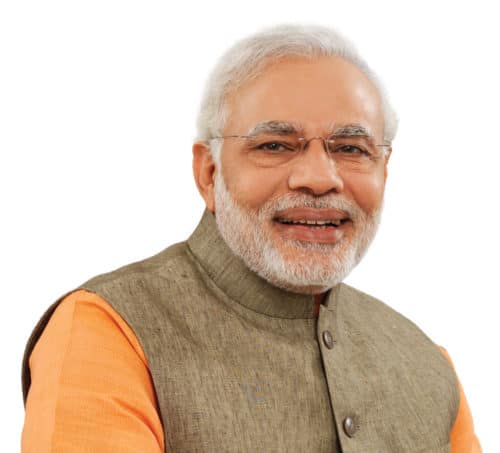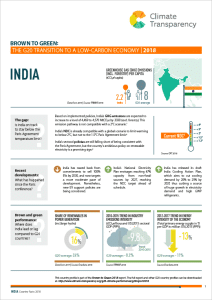
“One Nation, One Gas Grid”, one big opportunity for biogas developers
-
Oil companies are offering off-take guarantees
-
Gas infrastructure is being scaled up
-
India’s ambitions for renewable energy
-
India is a G20 pacesetter in meeting Paris Agreement
India has issued an open invitation to biogas developers to invest in the country, launching the ‘One Nation, One Gas Grid’ energy initiative.
The call was made by Prime Minister Narendra Modi (above) and detailed by Dharmendra Pradhan, Minister of Petroleum and Natural Gas and Steel.
Both were speaking at the third edition of the RE-INVEST – Renewable Energy Investment – conference (26-28 November), attended by the Prime Ministers of Israel and the Netherlands, and HE Mr. Bento Albuquerque, Minister of Mines and Energy, Brazil, amongst others.
Oil companies are offering offtake guarantees

At the inaugural event in 2015 the country launched “One Sun, One World, One Grid” to leverage solar energy. Subsequently installed solar capacity has increased 13 times, today delivering over 38,000 MW.
Scaling the biogas sector in similar fashion is now the focus of attention. One part of the initiative aims to establish 5,000 compressed biogas plants with an output of 15 million metric tons annually, equivalent to 208 TWh energy or 22 billion m3 volume.
Minister Pradhan said oil companies are offering assured prices and off-take guarantees to private entrepreneurs and that the required infrastructure is being developed.
Dedicated one-stop shops – Project Development Cells and FDI cells in all Ministries to facilitate investors – have been established to support foreign direct investment.
Over the past six years India had attracted US$64bn FDI.
“Foreign investors can either invest on their own or enter into joint ventures with an Indian partner for financial and/or technical collaboration for setting up of renewable energy-based power generation projects,” he said.
Gas infrastructure is being scaled up
Minister Pradhan told the conference, “We have already laid over 16,800 km long gas pipeline network, and additionally 14,700 km gas pipelines are under different stages of construction. An estimated investment of US$60bn is lined up in developing gas infrastructure, which includes pipelines, city gas distribution and LNG regasification terminals.
“The vast gas-based infrastructure will offer enormous opportunities for integrating different sources of energy in the country. This is yet another potential area of growth with vast investment opportunities.”
Pradhan invited the participants to look at the investment opportunities in the Compressed Bio-Gas (CBG) initiative. “We have a well-developed roadmap for SATAT (Sustainable Alternative Towards Affordable Transportation), an important initiative of our government, which targets to set up 5,000 compressed biogas plants with a target of 15 MMT (million metric tonnes) per year with investment potential for US$20bn.
“Indian oil marketing companies are offering to private entrepreneurs assured price and off-take guarantee. The Reserve Bank of India has included CBG projects under Priority Sector that will help in getting the loan for CBG plant. I am glad to inform that a total of 1,500 CBG plants are at various stages of execution.”
India’s ambitions for renewable energy
In his opening address PM Modi said, “Today, India’s renewable power capacity is the 4th largest in the world. It is growing at the fastest speed among all major countries. The renewable energy capacity in India is currently 136 Giga Watts, which is about 36 per cent of our total capacity. By 2022, the share of renewable capacity will increase to over 220 Giga Watts.
“You would be happy to know that our annual renewable energy capacity addition has been exceeding that of coal based thermal power since 2017.In the last 6 years, we increased our installed renewable energy capacity by two and half times. In the last 6 years, the installed solar energy capacity has increased 13 times.”
He added, “Today, every village and almost every household in India has access to electricity. Tomorrow, their energy demand will increase. Thus, demand for energy in India will keep growing. There are huge renewable energy deployment plans for the next decade.
“These are likely to generate business prospects of the order of around 1.5 lakh crore rupees or US$20bn per year. This is a big opportunity to invest in India. I invite investors, developers and businesses to join India’s renewable energy journey.”
India is a G20 pacesetter in meeting Paris Agreement

India is the only country on track among the G20 nations to meet its climate change mitigation commitments, according to the 2020 Climate Transparency report.
Climate Transparency, an international partnership of 14 research and non-governmental organizations, examined efforts to combat climate change among the G20 nations — considering their climate goals and actions taken.
The dedicated country report found that India’s “fair share” climate targets that it set under the 2015 Paris Agreement as well as the actions it’s taken in the years since make it “compatible” with the upper goal of curbing global warming by 2 degrees Celsius by the end of the century.
India has promised to reduce its emissions intensity by 33-35% by 2030 and took actions in its energy, waste, industry, transport and forestry sectors, the report said.
However, it noted that India continues to not be on track to reach the Paris Agreement’s long-term 1.5 C target. It added that India could be a “global leader” if it didn’t build new coal fired power and phased out the use of coal by 2040.

